Why Fast Websites Win More Customers: The Business Impact of Page Speed on Conversions
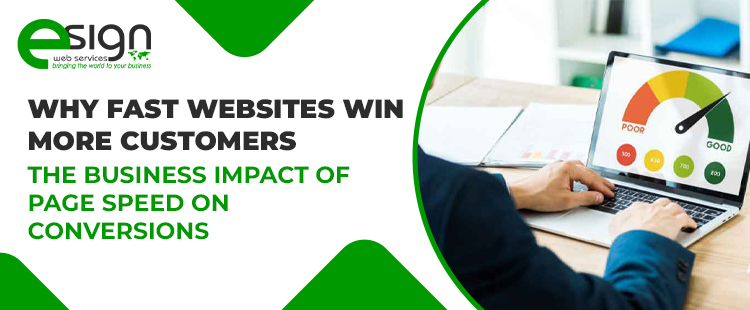
Key Takeaways
- Website speed and conversions are directly linked — every extra second reduces engagement and sales.
- A one-second delay can lower conversion rates by 20% and increase bounce rate significantly.
- Investing in page speed optimization improves SEO rankings, user satisfaction, and ad ROI.
- Core Web Vitals and Google PageSpeed Insights are essential benchmarks for long-term visibility.
- Fast sites enhance credibility, reduce friction, and build loyal, returning customers.
- Continuous website performance optimization turns speed from a metric into a business advantage.
Speed isn’t just a technical factor; it’s your website’s first handshake with visitors. A fast-loading site instantly communicates trust, professionalism, and reliability, while delays trigger frustration and cause potential customers to leave before they even engage with your content. In today’s fast-moving digital world, attention spans are short, and website speed and conversions are directly linked to success.
A Google study found that 53% of users abandon websites taking longer than three seconds to load, and a one-second delay can cut conversions by up to 20%. That means slow pages quietly drain both traffic and revenue. Effective page speed optimization transforms this problem into opportunity, making your business more credible, competitive, and user-friendly. Throughout this article, we’ll explore how improving speed enhances user psychology, search visibility, and return on investment, showing that even a few milliseconds can be the difference between a bounce and a sale.
The Psychology of Speed: Why Users Equate Fast with Trust
People don’t just browse — they judge. Within 0.05 seconds, your website’s load time shapes their entire perception of your brand. Fast experiences feel modern, efficient, and safe; slow ones feel careless and outdated. It’s why website speed and conversions go hand in hand. The human brain loves instant gratification — fast responses create micro “rewards” that keep users engaged.
When your pages render quickly, users interpret it as a sign of reliability and professionalism. Slow pages, on the other hand, spike stress levels, increase bounce rate, and reduce perceived credibility. A study found that a 0.1-second improvement in load time boosted conversions by 8%. That’s not a technical win — it’s emotional economics. Speed doesn’t just serve convenience; it serves trust. The faster your site “feels,” the more users will believe you value their time — and their business.
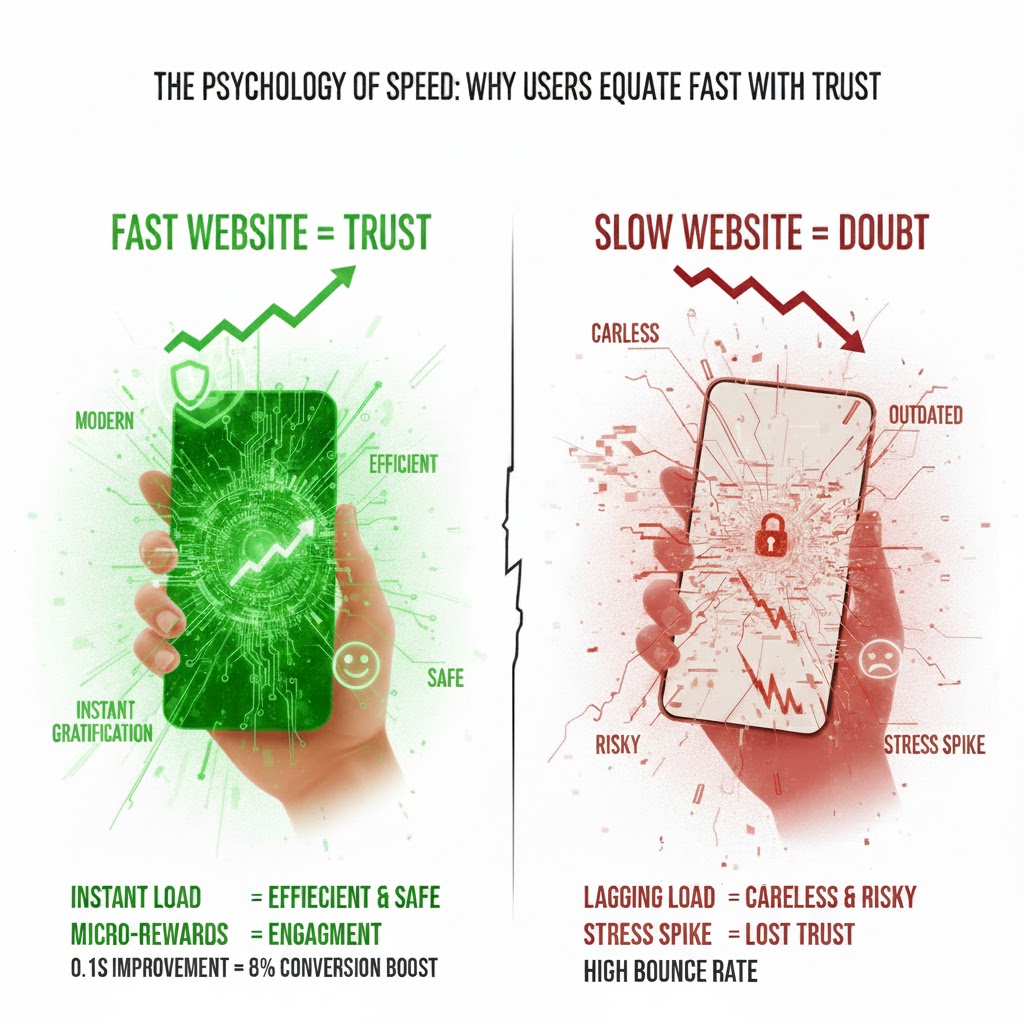
The Hidden Cost of Slow Sites
Website speed isn’t just UX—it’s revenue. Every extra second your pages hesitate leaks trust, spikes bounce rate, and slashes conversions. Slow checkout inflates cart abandonment, weakens ad Quality Score, and raises acquisition costs. On mobile, delays are brutal. Optimize performance to protect margin, sustain growth, and turn fleeting clicks into customers. Faster journeys lift revenue, retention, and lifetime value dramatically.
- A 1-second delay can cut conversions by 7–20%.
- Cart abandonment increases 26% when checkout pages load slowly.
- Mobile optimization gaps cause more than 50% of users to abandon their sessions.
- Slower sites incur higher costs in paid ads by lowering their Quality Score.
Multiply that by your monthly traffic, and you’ll see how slow speed silently eats ROI. Businesses that invest in website performance optimization often see a direct lift in revenue and retention. Every 100ms of delay costs them 1% in sales — imagine the compounding loss for smaller businesses.
Your website isn’t just a digital storefront; it’s your silent salesperson. Keep it fast, and it’ll sell 24/7. Slow it down, and it’ll send customers straight to your competitors.
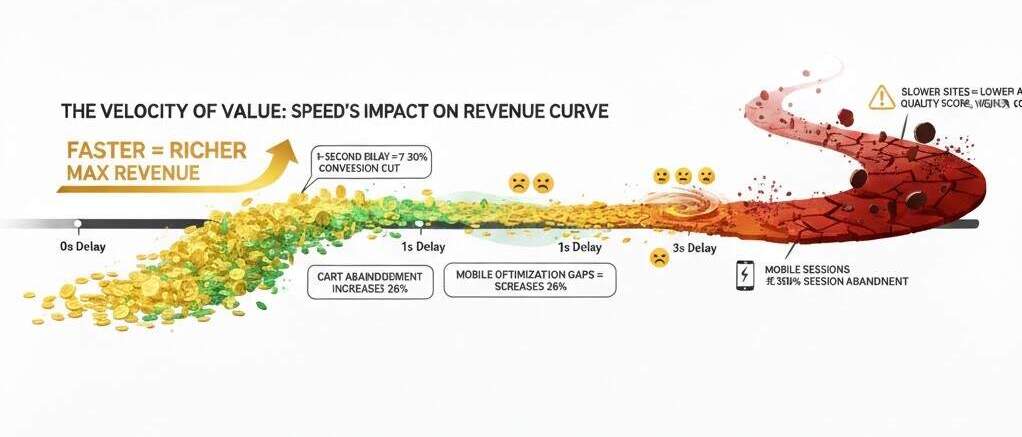
How Speed Impacts SEO and Discoverability
Search engines now measure satisfaction, not just keywords. Google’s Core Web Vitals — Largest Contentful Paint (LCP), Interaction to Next Paint (INP), and Cumulative Layout Shift (CLS) — directly influence ranking. In short, faster sites rank higher.
A well-optimized site aligns website speed for SEO with better click-through rates, improved dwell time, and stronger engagement signals. When pages load fast, visitors stay longer, bounce less, and convert more — metrics Google interprets as quality.
Beyond organic search, page speed optimization improves ad performance. Faster landing pages earn higher Quality Scores, which reduces CPC and boosts ad ROI. According to Think With Google, even a 0.5-second improvement can increase mobile conversions by 10%.
The takeaway? SEO isn’t just about writing better — it’s about loading better. If your content takes too long to appear, Google won’t wait, and neither will your customers.
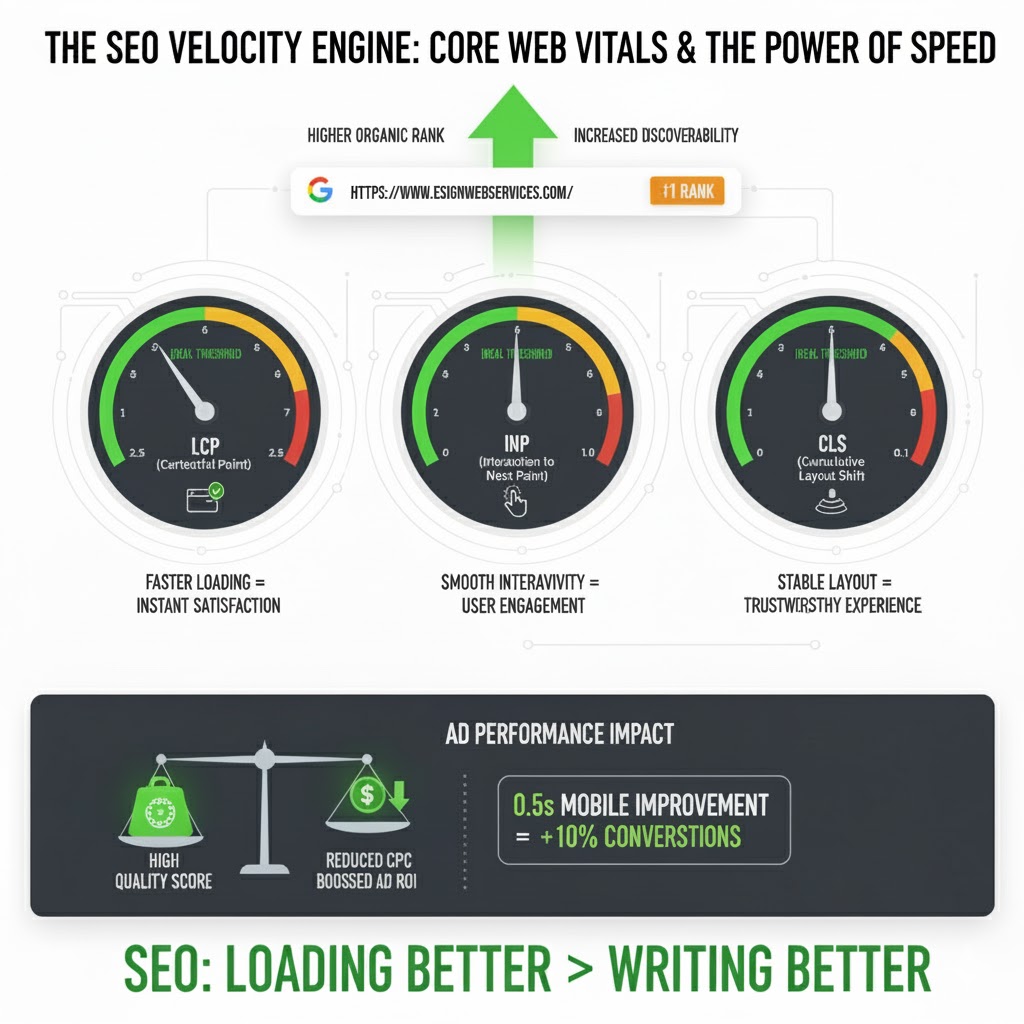
Customer Experience and Conversion Rate Optimization
Speed defines experience. A fast site makes users feel in control; a slow one makes them feel trapped. Good design means nothing if it doesn’t load in time to make an impression. In UX, perception of performance often matters more than the number itself.
Fast load times create smooth, frictionless journeys. Buttons respond instantly, images appear sharp, and scrolling feels seamless. This synergy amplifies your conversion rate optimization efforts — because users only convert when the experience feels effortless. Slow interactions, in contrast, lead to cognitive fatigue and decision drop-offs.
Pair website speed optimization with smart UX moves: simplified navigation, sticky CTAs, and fewer pop-ups. Every friction point removed boosts trust and momentum. In marketing terms, speed doesn’t just improve usability — it improves conversion rate by aligning emotion, design, and intent into one flow.
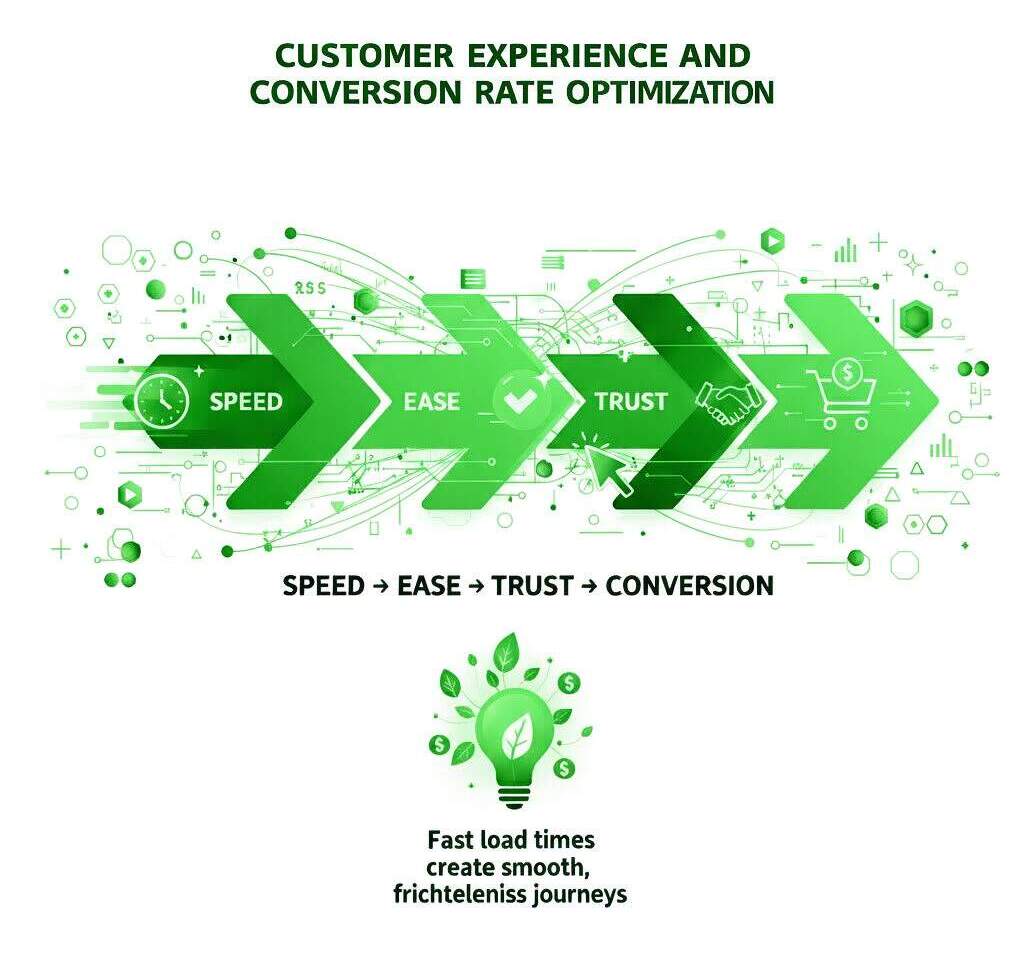
Competitive Advantage: Why Speed Decides Winners
Speed is the ultimate differentiator in a crowded digital market. When two brands offer similar products, users almost always pick the faster experience. A study by Portent found that websites loading in 1 second convert 3x more than those taking 5 seconds. That’s an instant market gap you can’t ignore.
Fast sites naturally reduce acquisition costs because visitors complete their journeys more often. They also enhance brand reputation — users perceive quick websites as better organized and more reliable. Combine website speed and conversions with strong branding, and your business will stand out for all the right reasons.
Competitors can copy your visuals or pricing, but not your speed discipline. Make performance your brand’s superpower. When your pages load before the customer blinks, you don’t just win clicks — you win loyalty.
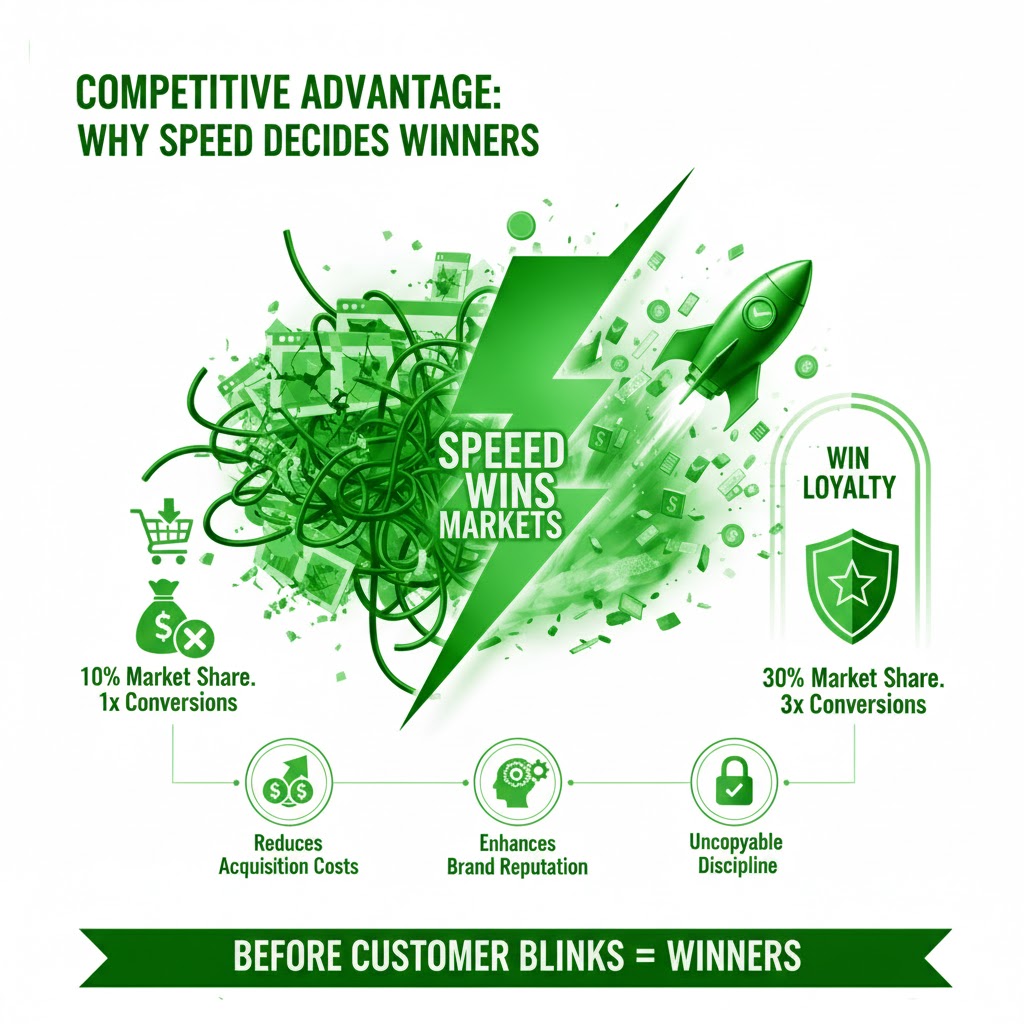
 Measuring Performance: Data, Tools & ROI
Website speed isn’t just technical—it’s emotional, measurable, and profitable. Every performance metric reflects user emotion and buying behavior. Fast-loading pages earn trust, quick interactivity drives engagement, and visual stability builds confidence. Together, these elements of website performance optimization transform casual visits into loyal customers and measurable, long-term business growth.
| Metric | Target Benchmark | What It Means for Users | Business Impact |
| LCP (Load Speed) | < 2.5s | Content appears instantly | Builds trust & reduces exits |
| INP (Interactivity) | < 200ms | Buttons react immediately | Increases engagement & sales |
| CLS (Layout Stability) | < 0.1 | Page stays steady | Prevents rage clicks & frustration |
| Mobile Load Time | < 3s | Smooth experience anywhere | Boosts mobile conversions 30%+ |
| Bounce Rate | < 40% | Users stay longer | Drives stronger conversion funnels |
When website performance optimization aligns with user psychology, every second saved builds connection and confidence. Speed isn’t just numbers—it’s emotion that converts. Faster sites earn trust, inspire action, and create loyalty. The result? A digital experience that multiplies satisfaction, engagement, and profit across every customer journey.
Steps to Improve Website Speed and Conversions
Improving speed is simpler — and cheaper — than you think. Start with mobile optimization since most traffic now comes from phones. Compress images, cache pages, and use a CDN for global delivery. Upgrade to modern hosting and regularly optimize your databases for optimal performance.
Next, focus on design efficiency. Simplify layouts, remove heavy scripts, and reduce third-party plugins. These steps alone can significantly increase website speed. For WordPress sites, plugins like WP Rocket or NitroPack make a huge difference.
Finally, align these improvements with conversion rate optimization strategies. Test button placements, simplify checkout flows, and use heatmaps to identify drop-offs. Faster load + smoother UX = exponential gains. Remember: improving speed isn’t a one-time project — it’s an ongoing habit that scales with your business growth.
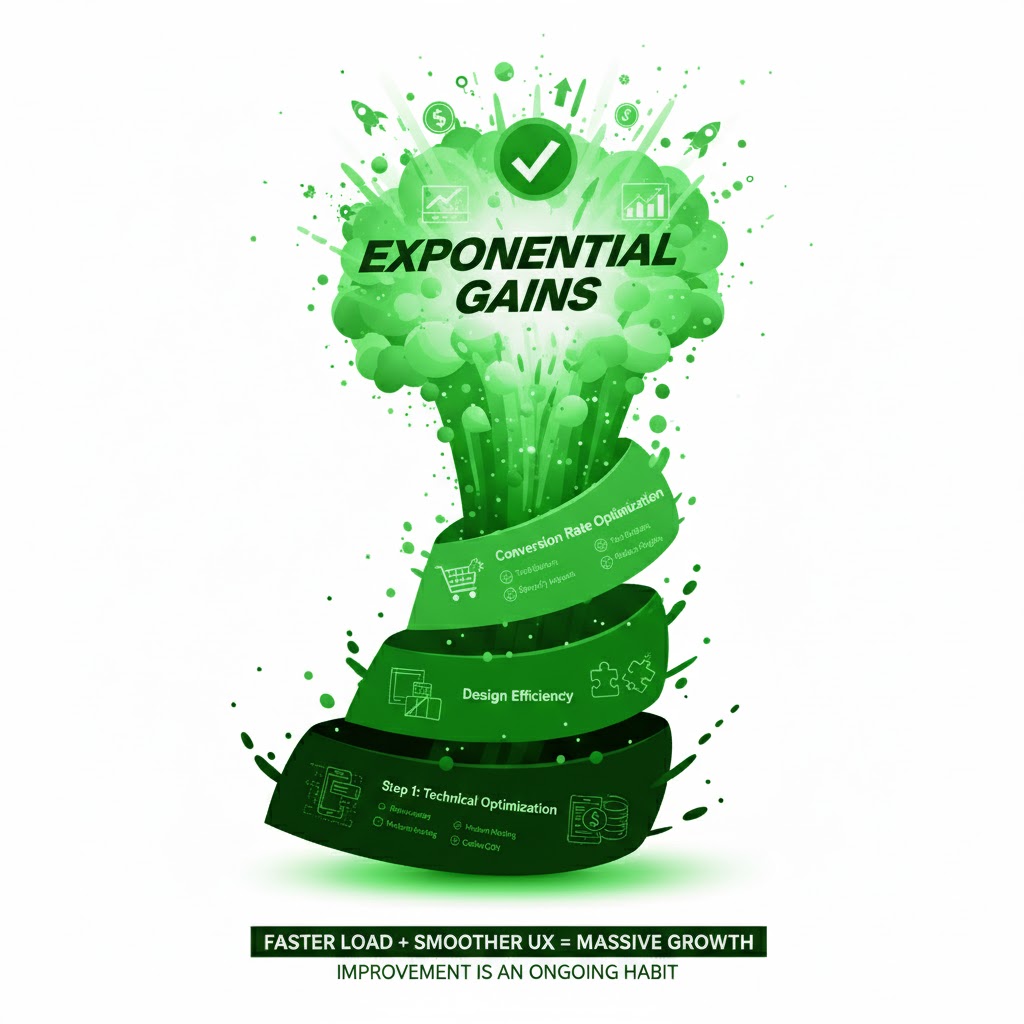
Action Plan: How to Win with Speed
âś… Audit your site using Google PageSpeed Insights and Core Web Vitals.
âś… Compress all media files and serve them in next-gen formats (WebP/AVIF).
âś… Enable caching, CDN, and lazy loading for faster rendering.
âś… Reduce unnecessary scripts and optimize mobile responsiveness.
âś… Track ROI by connecting performance improvements to conversion data.
Every second shaved is a sale gained. Speed isn’t a one-time project; it’s a continuous commitment to customer delight.
Overview: Why Speed Is the New Sales Strategy
A fast website isn’t just a convenience — it’s a competitive edge that drives profit, builds credibility, and accelerates growth. In today’s digital-first marketplace, speed has become the silent salesman that wins trust before your content even loads. Investing in website speed optimization and conversion rate optimization is no longer optional; it’s fundamental to survival. Every millisecond matters — it defines whether a visitor becomes a buyer or bounces away. The businesses dominating online search and sales today share one defining quality: lightning-fast performance. In the digital world, speed isn’t just a feature; it’s a first impression that sells.
At eSign Web Services, we excel in page speed optimization, website performance optimization, and advanced Core Web Vitals analysis. Whether you’re scaling an eCommerce store or enhancing a service website, our strategies turn speed into measurable success. Every click counts — and we ensure yours converts.
Ready to Turn Every Second Into Sales?
Your website has three seconds to impress — make every one count. Partner with eSign Web Services and watch milliseconds turn into momentum, visitors into loyal customers, and clicks into measurable growth.
⚡ Let’s make your website faster, smarter, and built to dominate.
Get Your Free Website Speed Audit Today →
Frequently Asked Questions
Why is website speed important for conversions?
Website speed directly influences user behavior. Fast-loading pages reduce bounce rate and increase trust, leading to more purchases and inquiries. A delay of just one second can lower conversion rates by up to 20%, proving that speed equals profit in digital performance.
How does website speed affect SEO rankings?
Search engines prioritize fast, user-friendly sites. With Google’s Core Web Vitals, metrics like load time, interactivity, and stability directly influence rankings. Optimizing these elements improves user experience, reduces bounce rate, and enhances visibility across organic search results, boosting both engagement and conversions.
What tools can I use to test website speed?
Reliable tools include Google PageSpeed Insights, GTmetrix, and Pingdom. These platforms analyze your site’s performance, measure key metrics, and provide actionable recommendations. Regular testing ensures your site maintains ideal loading times for both desktop and mobile users, sustaining consistent performance and engagement.
How can small businesses improve website speed affordably?
Start with image compression, browser caching, and minimizing plug-ins. Use a Content Delivery Network (CDN) to distribute content faster and invest in reliable hosting. Affordable, consistent website performance optimization can dramatically increase speed without large budgets, helping small businesses compete effectively online.
What is the ideal website load time for conversions?
The ideal load time is under three seconds. Studies show 53% of users abandon slower websites. By maintaining quick interactivity and stable visuals, businesses enhance engagement and conversion rate optimization, ensuring users stay, explore, and purchase instead of bouncing away.
How does mobile optimization affect page speed and conversions?
Over 60% of web traffic comes from mobile devices, making mobile optimization essential. Fast mobile pages increase user satisfaction, search visibility, and conversion rates. Simple mobile-first designs, compressed visuals, and responsive layouts ensure better retention and seamless on-the-go experiences.
Why should I hire experts for website speed optimization?
Professionals use advanced tools, diagnostics, and conversion rate optimization strategies to enhance performance beyond basic fixes. Agencies like eSign Web Services combine analytics, UX insights, and technical expertise to deliver measurable improvements in load time, rankings, and customer satisfaction across all digital touchpoints.
Â


